Planting and caring for root parsley in open ground
Root parsley is a useful herb. Its unique aroma improves the taste of many dishes and marinades. Parsley is easy to grow on a small plot of land. Caring for it does not require much effort, but there are still some peculiarities of growing the crop in open ground.
Description and characteristics of root parsley
Root parsley is a member of the Apiaceae family. The biennial plant reaches a height of one meter. The root vegetable is fleshy, yellow-white in color. The leaves are bright green in color, collected in a rosette.
The plant blooms in mid-summer and produces seeds only in the second year.
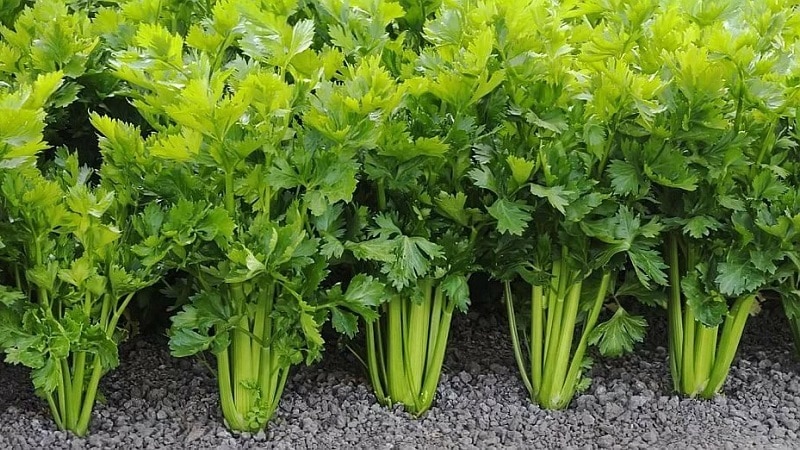
Parsley is used not only in cooking, but also in folk medicine.
The plant has the following medicinal properties:
- diuretic;
- anti-inflammatory;
- bactericidal;
- antiallergic.
Root vegetables help effectively:
- normalize blood sugar;
- prevent the development of cardiovascular diseases;
- improve vision;
- eliminate inflammatory processes;
- normalize digestion.
Varieties of root parsley
Early-ripening, mid-ripening and late-ripening varieties of spicy crops are grown in the garden and summer cottage. The most popular ones:
- Sugar. An early ripening variety, it has a ripening period of about one hundred days after germination. It produces a harvest only in the second year. The fruits are grayish in color with yellow flesh. The crop yield is 3 kg per 1 m².
- Eagle. Representative of mid-early varieties. Bred in Holland.The root crops have a compact shape and weight 120-130 g. The average yield is 2 kg per 1 m². The variety is intended for fresh consumption, processing and long-term storage.
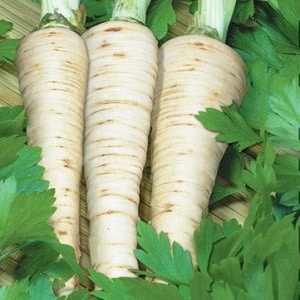 Harvest (on the picture). Has good taste. Underground fruits with white and crispy pulp, reaching a weight of 70-90 g. The variety is highly resistant to low temperatures. Used in fresh, dried and frozen forms.
Harvest (on the picture). Has good taste. Underground fruits with white and crispy pulp, reaching a weight of 70-90 g. The variety is highly resistant to low temperatures. Used in fresh, dried and frozen forms.- The final. A mid-season variety with large root crops, the weight reaches 200 g. Ripening time is 130 days after germination. The average yield is 2 kg per 1 m². Shelf life is average.
- Spicy. Medium ripening variety. Mass harvesting of root crops begins 120-130 days after germination. It has a pleasant aroma and good taste. The root vegetable is conical in shape, weighs 100 g. Suitable for fresh consumption and storage.
- Alba. A late-ripening variety, ripening 170-180 days after the sprouts appear. Gives a high yield. From 1 m² you get up to 5 kg of root vegetables with white aromatic pulp and excellent taste. The fruits are stored for a long time. They are eaten raw and canned.
Take note:
How parsley helps with puffiness under the eyes
Features of planting root parsley in open ground, cultivation and care
Root parsley grows well in open ground. To get even and large root crops, adhere to the basic rules of agricultural technology.
Landing dates
The plant is unpretentious, it easily tolerates temperature changes and cold.. It is sown both before winter and in early spring.
In the autumn, planting is carried out 14-20 days before possible frosts.. It takes some time for the seeds to germinate. In spring, sow as soon as it is possible to cultivate the soil.
Attention! The plant needs moist soil to germinate, so do not skip the recommended planting time.
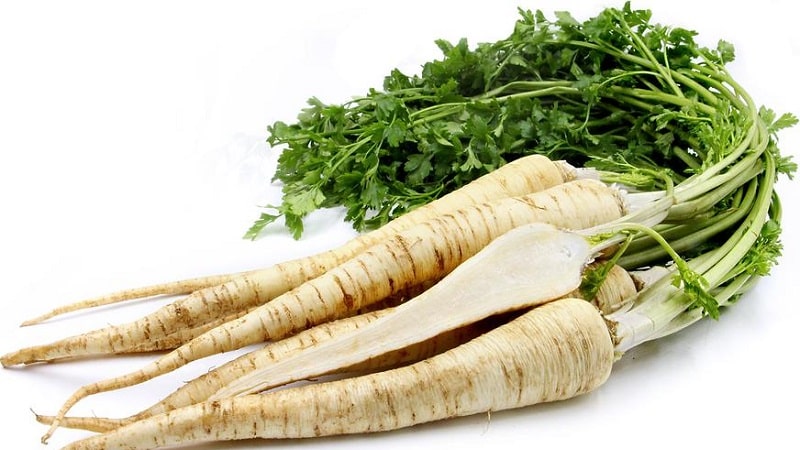
Choosing a location on the site
The correct choice of the bed on which you plan to grow parsley makes it possible to increase productivity. Give preference to sandy loam, sod-podzolic and light loamy soils with neutral or high acidity.
Choose places with good lighting, where groundwater does not come close.
Important! With high soil moisture, parsley quickly rots.
It is good to sow the crop on the south side of fences or buildings, because she doesn’t like cold winds and drafts.
When choosing a bed, pay attention to its predecessors. A high yield of root crops is obtained in areas where they grew last season:
- cucumbers;
- zucchini;
- pumpkin.
Spicy culture develops poorly after other representatives of umbrella plants.
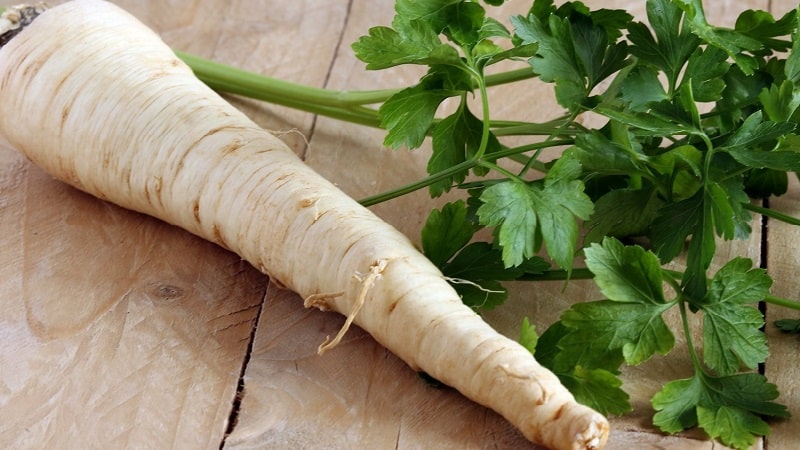
Soil preparation
In the fall, a pre-selected area is dug up and humus is added. Recommended rate – 4-5 kg of fertilizer per 1 m². To loosen the soil and increase breathability, sand is added.
Attention! Before planting, organic matter is not used, as it negatively affects the development of the root system. Root vegetables are obtained with low taste and ugly shape.
In spring, combined fertilizer is applied per 1 m², consisting of 15 g of superphosphate, 10 g of potassium chloride, 25 g of nitrate.
Preparation of planting material
Root parsley seeds germinate slowly, so they need help.14-16 days before the planned planting, seed material begins to be prepared:
- Soak in a weak solution of potassium permanganate for 24 hours.
- Place in an even layer on a damp piece of cloth or gauze for germination.
- When sprouts appear, place on ice in the refrigerator for one week.
- Dried and used for sowing.
Seeds have better germination collected 1 year ago.
Landing technology
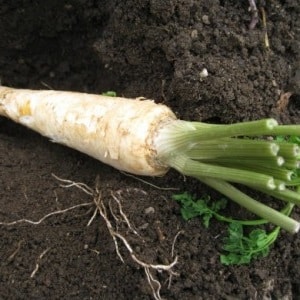 Sow according to this pattern:
Sow according to this pattern:
- Make shallow furrows (about 3 cm), leaving a distance between rows of about 20 cm.
- Seeds are sown at intervals of 1-4 cm, lowering them into the ground one by one.
- Sprinkle with earth.
- Watered.
To speed up the emergence of seedlings The bed is covered with plastic wrap for several days. When the sprouts appear, it is removed.
Features of caring for root parsley
To grow large and high-quality root crops, the plant is regularly loosened and weeded. The first loosening is carried out at 5-6 cm, when the plant gets stronger - at 10-12 cm. After each precipitation or watering, loosen the soil between the rows to improve the air permeability of the soil.
For full growth and development root parsley is broken through 2 times:
- as soon as it has risen (after 2 cm);
- two weeks later (after 6-7 cm).
Watering rules
Although the plant does not require moisture, it is important to water it regularly. When moistening the soil, adhere to the following rules:
- Water in the morning and evening.
- Water consumption – 2 buckets per 1 m².
If it rains frequently, watering is reduced or stopped altogether.so that the root crops do not rot.
Attention! The crop needs watering at the end of summer, when the underground fruits ripen.
Features of fertilization
The plant responds well to the addition of nutritional supplements to the soil.. The use of fertilizing is recommended in the early period of its vegetation development.
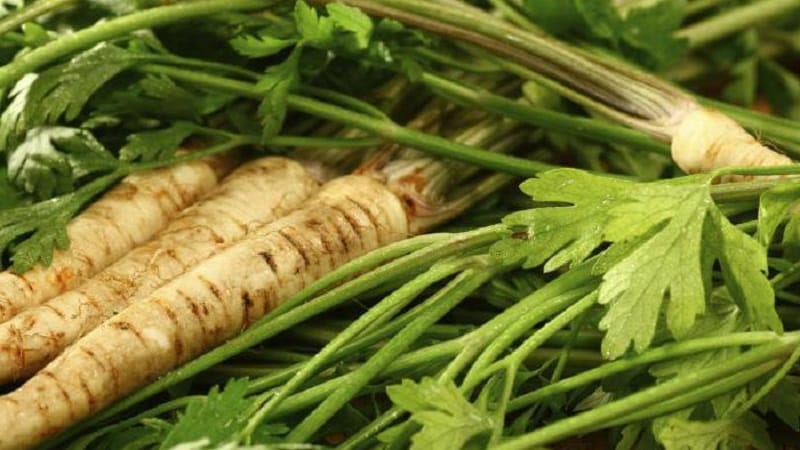
When the parsley has its first 3-4 leaves, use any nitrogen-potassium fertilizer. After another 3 weeks, complex feeding is carried out with ammonium nitrate and potassium salt, 5-7 g each, as well as superphosphate (8-10 g). This amount of nutritional components is used per 1 m².
Protection from diseases and pests
Improper care of spices and unfavorable climatic conditions lead to the development of a number of diseases, including:
- Powdery mildew. The fungal disease is characterized by the appearance of a white coating with black spots on the leaves. The damaged area begins to dry out.
- Stolbur. The plant is affected by an intracellular parasite. A sign of the disease is redness of the leaves around the edges.
- Rust. Rusty-colored pads appear on the leaves. The fungus spreads quickly and the parsley dries out.
- Septoria, or white spot. Brown spots are observed on the plant crop, which become dirty white over time.
Ready-made industrial products are used to combat diseases. If a plant is affected by powdery mildew, it is treated with a composition of colloidal or ground sulfur, the drug “Bayleton”. When fungus appears, parsley is sprayed with 1% Bordeaux mixture. It is recommended to carry out treatments every 10 days. Chemicals are stopped used 3 weeks before the start of harvest.
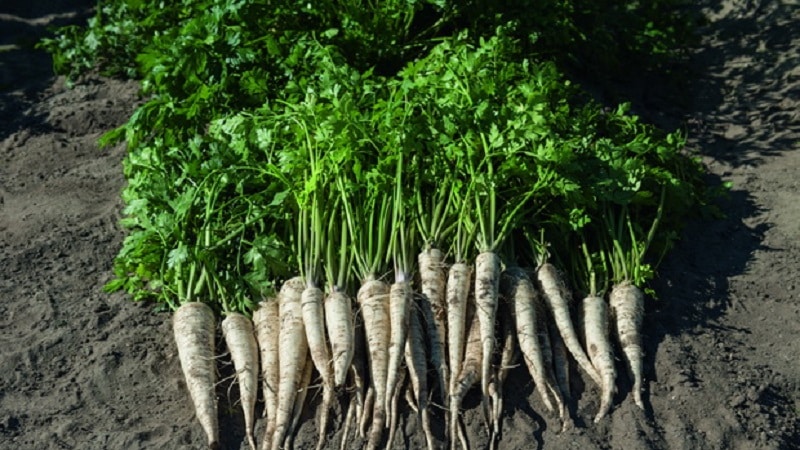
Plant culture also often attacked by insect pests:
- Carrot psyllid. Parsley develops poorly and turns yellow, the leaves curl.
- Aphid. The defeat leads to wilting, yellowing and death of the plant.
- Stem nematode. There is deformation of the green parts of parsley and a slowdown in its growth.
- Carrot fly. The leaves turn red-violet and dry out.
Read also:
If the damage is minor, use safe folk remedies, including:
- Tobacco dust. Sprinkle on leaves and soil between rows.
- Infusion of citrus peels. Treatment is carried out to repel carrot flies.
- Dandelion composition. Before use, the raw material is infused for 2-3 hours. Eliminates melon aphids.
- Garlic infusion. A universal remedy for repelling many pests. Chopped cloves of one head of garlic are poured into 1.5 liters of water and infused for 6-8 days. Before use, 50 ml of the resulting product is dissolved in one bucket of water.
- Onion infusion. Effective in controlling pests and infectious diseases. A paste is made from the onion and mixed with water in a 1:1 ratio. They insist for a week. Before use, 20 ml of the composition is diluted in 10 liters of water.
Nettle infusion gives a good effect, which is used as a prophylactic agent. The components contained in it strengthen the plant’s immunity, resulting in increased resistance to many diseases.
To prepare the solution 600 g of nettles are brewed with 5 liters of boiling water. The container is placed in a warm place to allow the composition to ferment. After 5-7 days, the product is filtered, additionally diluted with water in a ratio of 1:10 and watered at the root.
If you can’t control pests with folk remedies, use drugs:
- "Karbofos";
- "Intavir";
- "Decis";
- "Spark";
- "Confidor";
- "Aktara".
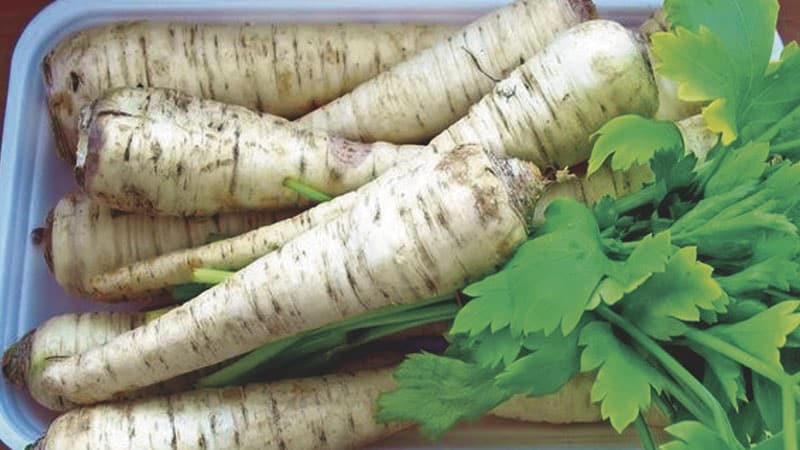
How to harvest
The harvest is harvested in September - October depending on the climate zone.To dig up root crops, choose days when the weather is dry and sunny.
First, cut off the greens, leaving a small stump. Then carefully remove the root from the ground, shake it off and let it dry for 2-3 hours.
The collected root crops are placed in the cellar and covered with sand.. They can also be stored in the refrigerator by placing the roots in a perforated plastic bag.
Conclusion
Root parsley is a plant crop that perfectly retains its taste, nutrients and medicinal properties even after long-term storage. Fresh and frozen products are used throughout the year for preparing salads, first and second courses, and canning. It is included in folk remedies used to combat many diseases.